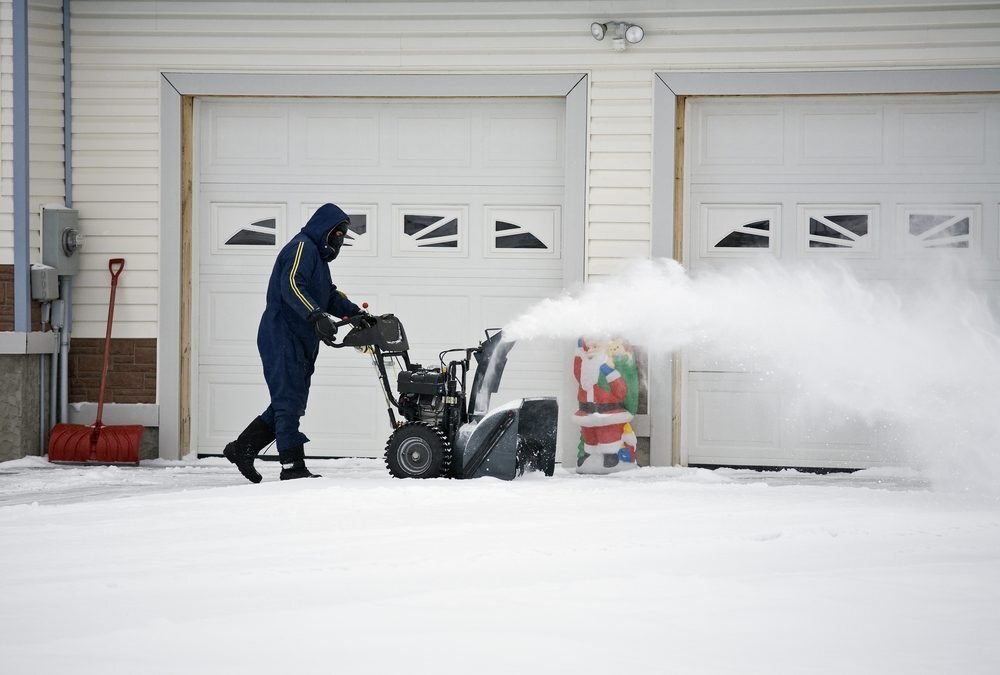Wow! Is it cold out there or what? With one cold front after another gripping huge swathes of the country, people are quite literally shaking in their boots. But that doesn’t have to be you! Have you winterized your garage door? This is not something you want to overlook when temperatures drop into the teens… or below.
Sure, you’ve covered your flower beds, emptied the bird feeders, cleared the gutters and trimmed the trees, but have you considered your garage? While the list of homeowner’s winter prep tips is long, an insulated garage is about more than keeping plants from freezing and gutters clear. This is about temperature control and so much more.
But First… Why Should You Winterize Your Garage?
You must use your garage door several times a day, but have you thought about the kind of impact extremely cold weather can have on this most important door? Your garage door is at the vanguard of the elements more than any other entry point in your home. And if you are using your garage as a den or entertainment area, the need for proper insulation is even more important. So, how exactly does cold weather affect your garage door?
First, cold temperatures cause the metal components of your garage door to shrink. Like just about any other substance and thing responding to cold, springs and screws want to curl up into themselves when the weather is cold. And if they are already old, weakened, or compromised, all it might take is a good freeze-over to create a garage door-sized problem. Cold weather has a net negative impact on the overall durability of your garage door.
Even more than ensuring the proper functionality of your garage door, your garage is also an important line of defense in keeping cold air from getting into your living space. The last thing you’ll want to hear is someone telling you to chill out after your temperature rises from a huge power bill. Fortunately, there are things you – as a homeowner – can do to help keep your garage door in fine shape for winter.
How You Can Help Protect Your Garage
Colder winters do no favors for garage doors and their components. Want to help winterize your garage? Fortunately, you can! There are many ways homeowners can take matters into their own hands. Even better, not all of these methods are unique to winter seasons. Don’t wait to put things off like inspection of the door itself and the tracks it runs on. Simply stand outside and watch the garage door go up and down. Listen for any sounds it makes. Do you see any unusual movements or does the mechanical process look strained? A thorough observation and inspection is one of the easiest things a homeowner can do.
Next, make sure your garage door’s moving parts are well lubricated. This is a simple procedure. Your local hardware store should have at least one variety of spray lubricant. Make sure you spray all the visible springs, bearings, and hinges. Has the cold weather ensured all your neighbors bought out the spray lubricant? Worry not, just try a couple drops of standard engine oil. That ought to do the trick! One thing you want to avoid is grease. Grease is too thick and causes dirt and debris to get caught up in the mechanical components, which you don’t want.
Obviously, when you winterize your garage, the first thing you consider is the seal. If you see gaps in your garage door seal when it is closed, you better expect Old Man Winter to come pay you a visit. Shut the garage at night and turn the lights on inside. If you see any light shining through the garage door seal, you’ve got a problem. You can either replace damaged or missing sections of the seal or the entire seal itself.
Stay Organized, Clean, and Dirt-Free
There are two important final considerations in winterizing your garage: organization and cleanliness. A messy, unorganized garage makes it hard for you to address problems that result from poor insulation. Also, dirt is no minor thing. Dirt looks bad and damage can result when dirt is allowed to collect unabated on your garage door.
As you clean out your garage, it wouldn’t hurt to grab a bucket of water, soap, and a brush and give your garage a good scrub down. Of course, you’ll want to wait for a semi-warm sunny day to do it! If you have a wooden garage door, be careful to look for chips or cracks. Both wooden and steel doors may also need a new paint job before the worst of winter kicks in. A fresh coat of paint or stain provides solid protection from the harshness of winter.
Keeping dirt and debris away is also a matter of safety. Modern garage doors have safety features that can be compromised by dirt and debris. The problem is, harsh winter winds we get here in Northeastern Ohio easily blow mounds of fall leaves up against our garages. If you don’t make sure those leaves and other debris are cleared, they could block a sensor or other safety device required for the proper and safe functioning of your garage.
Look to Insulation to Properly Winterize Your Garage
Should you invest in insulated garage doors? It may be cold outside, but it’s never too late. When a garage is shared with a home, it has a big impact on the internal temperature of that home. If you have already completed an inspection and found damage or other major problems with your garage door, purchasing an insulated one as a replacement seems like a no-brainer. But what about a simple upgrade?
Whether you make an addition or major change to your home depends on many factors, including where you live. Here in Akron, Canton and the surrounding areas, we know what it’s like to get a good cold snap, with wind, ice, rain, and snow. We’ve seen our share of hail and storms! Cold air is inevitable, so insulated garage doors are not a bad idea for our geographic area.
Does the polar vortex have you considering a new, insulated garage door? Perhaps your winterization techniques just weren’t enough. If so, you know where to turn. Simply call us or fill out an appointment form today!

